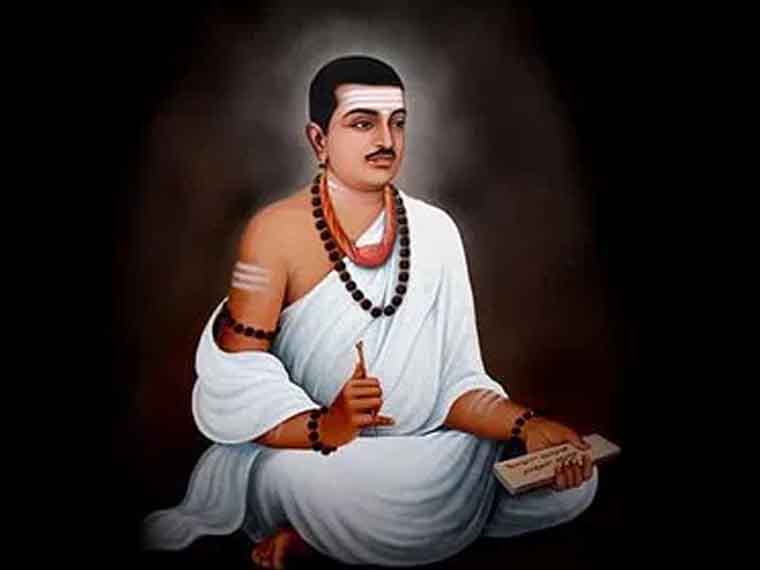CONTENTS
- Basava Jayanthi
- 4th India-CARICOM Ministerial Meeting
Basava Jayanthi
Focus: GS I- Person in news, History
Why in news?
PM bows to Jagadguru Basaveshwara on Basava Jayanthi.
- Basava Jayanthi is an annual event celebrated in the honour of the birth of Vishwaguru Basaveshwara, the 12th century philosopher and social reformer who gave a unique spiritual path to mankind.

Key Points
- Basavanna was a 12th-century philosopher, statesman, Kannada poet and a social reformer during the reign of the Kalachuri-dynasty king Bijjala I in Karnataka,
- His spiritual discipline was based on the principles of Arivu (true knowledge), Achara (right conduct), and Anubhava (divine experience) and it brought social, religious and economical revolution in the 12th century.
- This path advocates a holistic approach of Lingangayoga (union with the divine). This comprehensive discipline encompasses bhakti (devotion), jnana (knowledge), and kriye (action) in a well balanced manner.
- His practical approach and act of establishment of ‘Kalyana Rajya’ (Welfare state) brought a new status and position for all the citizens of the society, irrespective of class, caste, creed and sex.
- Basavanna spread social awareness through his poetry, popularly known as Vachanaas.
- Basavanna rejected gender or social discrimination, superstitions and rituals.
- As a leader, he developed and inspired a new devotional movement named Virashaivas, or “ardent, heroic worshippers of Shiva”. This movement shared its roots in the ongoing Tamil Bhakti movement, particularly the Shaiva Nayanars traditions, over the 7th- to 11th-century.
- Basaveshwara is the first Kannadiga in whose honour a commemorative coin has been minted in recognition of his social reforms.
- In November 2015, the Prime Minister of India Narendra Modi inaugurated the statue of Basaveshwara along the bank of the river Thames at Lambeth in London.
Basavanna and Sharana movement:
- The Sharana movement he presided over attracted people from all castes, and like most strands of the Bhakti movement, produced a corpus of literature, the vachanas, that unveiled the spiritual universe of the Veerashaiva saints.
- The egalitarianism of Basavanna’s Sharana movement was too radical for its times.
- He set up the Anubhava Mandapa, where the Sharanas, drawn from different castes and communities, gathered and engaged in learning and discussions.
- Sharanas challenged the final bastion of the caste order: they organised a wedding where the bridegroom was from a lower caste, and the bride a Brahmin.
Anubhava Mantapa:
- He established the Anubhava Mantapa, which was a common forum for all to discuss the prevailing problems of socio, economic and political strata including religious and spiritual principles along with personal problems.
- Thus, it was the first and foremost Parliament of India, where Sharanas (citizens of welfare society) sat together and discussed the socialistic principles of a Democratic set up.
- All those discussions of Sharanas were written in the form of Vachanas.
- Vachanas were an innovative literary form written in simple Kannada language.
Basaveshwara gave two more very important socio-economic principles. They are:
- Kayaka (Divine work): According to this, every individual of the society should take up the job of his choice and perform it with all sincerity.
- Dasoha (Equal distribution): There must be an equal income for equal work.
- The worker (Kayakajeevi) may lead his day-today life by his hard earned income. But he should not preserve the money or property for tomorrow. He must utilise the surplus money for the society and poors.
4th India-CARICOM Ministerial Meeting
Focus: GS II: International Relations
Why in News?
India’s External Affairs Minister co-chaired the 4th India-CARICOM ministerial meeting with his Jamaican counterpart.
About CARICOM:
CARICOM is the Caribbean Community, a regional organization of Caribbean countries and dependencies. Here are some key points:
Purpose:
- To promote economic integration and cooperation among its members.
- To ensure that the benefits of integration are equitably shared.
- To coordinate foreign policy.
Members:
- 15 member countries: Antigua and Barbuda, The Bahamas, Barbados, Belize, Dominica, Grenada, Guyana, Haiti, Jamaica, Montserrat, Saint Kitts and Nevis, Saint Lucia, Saint Vincent and the Grenadines, Suriname, and Trinidad and Tobago.
- 5 associate member territories: Anguilla, Bermuda, the British Virgin Islands, the Cayman Islands, and the Turks and Caicos Islands.
- 6 observer states: Aruba, Colombia, the Dominican Republic, Mexico, Puerto Rico, and Venezuela.
Leadership:
- The Chairmanship of the Community rotates every six months among the member countries’ Heads.
Secretariat:
- The CARICOM Secretariat in Georgetown, Guyana, is the principal administrative organ of the Community.
- It is headed by a Secretary General who is the Chief Executive Officer of the Community.
Caribbean Court of Justice (CCJ):
- In 2007, CARICOM officially inaugurated the CCJ.
- It serves as the final court of appeal for CARICOM members and handles regional trade disputes.





